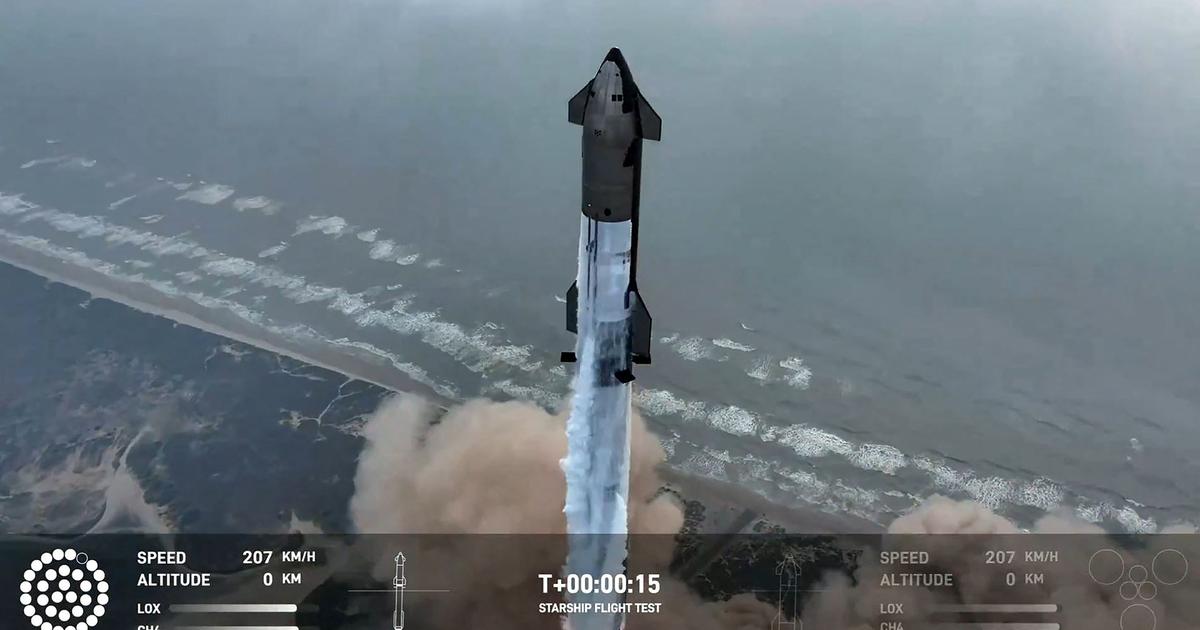SpaceX's Ambitious Starship Fourth Test Flight Takes Off Successfully
SpaceX has successfully launched its fourth test flight of the Starship rocket, the world's largest and most powerful rocket system, from its Starbase in Boca Chica, Texas. The lift-off occurred at 7:50 a.m. local time on Thursday (12:50 p.m. GMT), with the mission aiming to advance SpaceX's capability to conduct controlled landings and achieve a deeper re-entry into Earth's atmosphere. This test is crucial for SpaceX's future missions, including NASA's Artemis program, which aims to return humans to the Moon.
The Starship system is made up of two stages: the Super Heavy booster and the Starship spacecraft, bringing the total height to 120 meters. A significant milestone was achieved when the Super Heavy successfully detached from Starship a few minutes after launch and landed in the Gulf of Mexico, marking the first time this maneuver was executed flawlessly. Meanwhile, the Starship continued its journey, aimed at a controlled re-entry into Earth's atmosphere, with its final destination planned for the Indian Ocean.
The evolution of the Starship system has been rapid, with SpaceX adopting a 'test to failure' approach. This method, which focuses on identifying and rectifying system failings quickly, has seen significant advancements since the first test flight in April 2023. Previous tests of Starship provided critical data, such as the loss of signal 49 minutes post-launch due to clogged valves. These issues have been addressed, and new improvements made, including the addition of small black tiles to better insulate the spacecraft against high re-entry temperatures.
One of the critical objectives for this test was the 'controlled entry' into the atmosphere, which was achieved. This functionality is essential for future missions, particularly NASA's Artemis 3 mission scheduled for 2026, where Starship will serve as a moon lander. NASA has closely monitored these tests, highlighting the successful transfer of liquid oxygen between tanks as a key achievement.
SpaceX's commitment to making the Starship system fully reusable represents a significant leap forward in reducing space travel costs and environmental impact. While the ultimate goal remains to establish an autonomous colony on Mars, the immediate focus is on making Starship an integral part of lunar missions. The postponement of the Japanese billionaire Yusaku Maezawa's 'DearMoon' mission underscores the ongoing challenges, but also the ambitious vision SpaceX has for the future of space travel.
- The Federal Aviation Administration's recent approval for this fourth test flight signified another critical step for Space Exploration Technologies Company (SpaceX) towards developing a reliable system for space take-offs and landings on celestial bodies like the Moon. This mission leverages the Super Heavy booster with its 33 Raptor engines to carry Starship until a specified altitude where they separate, allowing the booster to perform a soft landing and Starship to proceed into space.
- Elon Musk expressed optimism about the mission, highlighting the goal to test the spacecraft's ability to endure the extreme conditions of re-entry. This rigorous approach to testing underscores the engineering challenge and innovation required to transition from test flights to operational missions. As SpaceX continues to iterate and improve the Starship system, the advancements are poised to play a crucial role in future NASA missions and potentially in establishing human presence on Mars.
- Despite the setbacks, such as the cancellation of the 'DearMoon' mission, SpaceX remains the dominant force in the space launch market, evidencing their operational prowess with 14 Falcon 9 rocket launches in May alone. The focus is now on fine-tuning the Starship system to meet the demands of interstellar travel, ensuring its reliability and efficiency for complex space missions.





